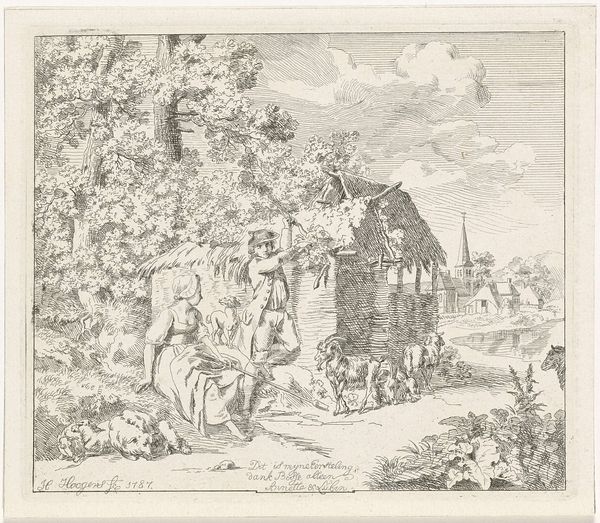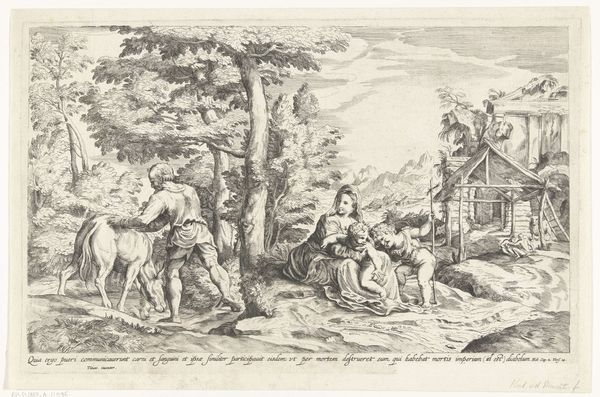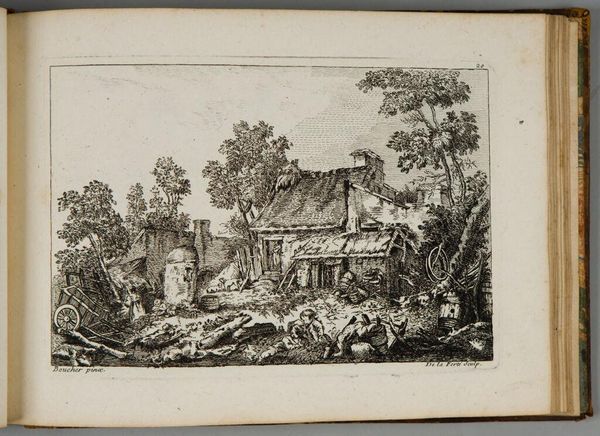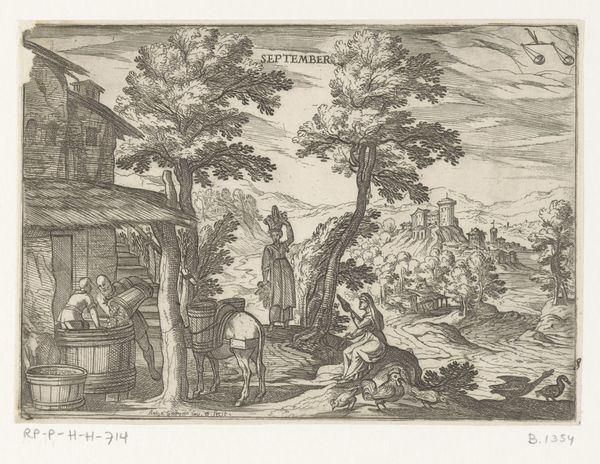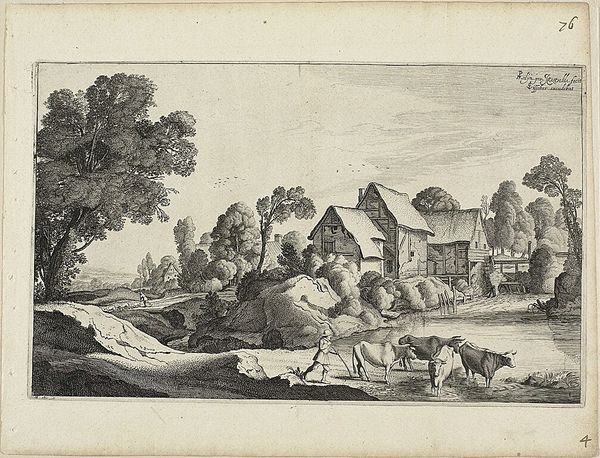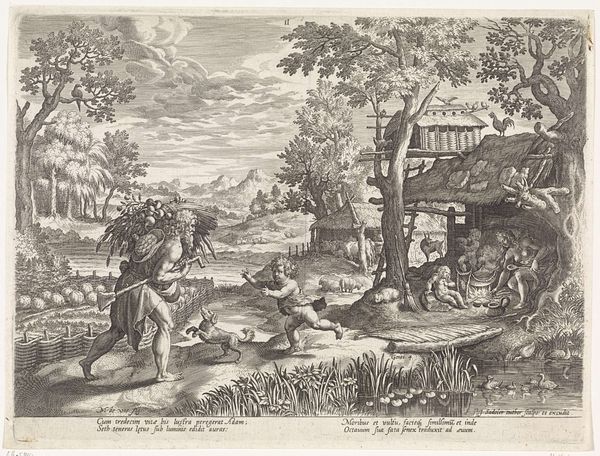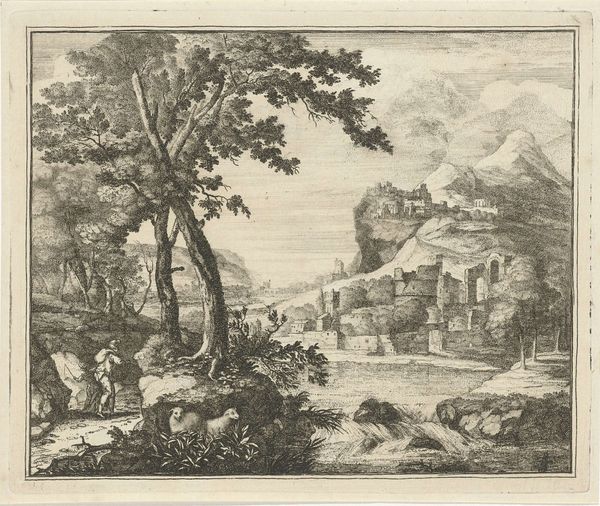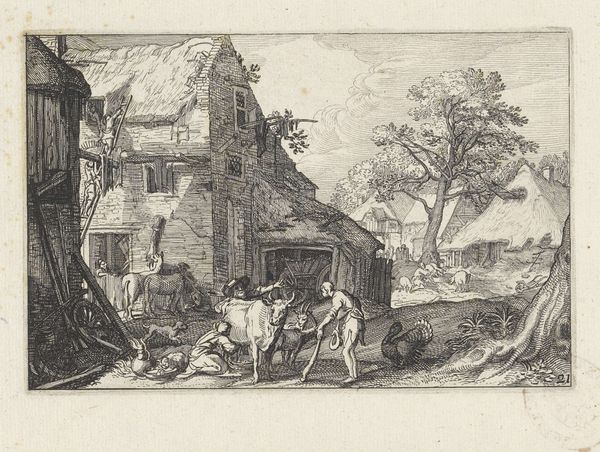
print, etching
#
narrative-art
# print
#
etching
#
landscape
#
etching
#
genre-painting
Dimensions: height 155 mm, width 178 mm
Copyright: Rijks Museum: Open Domain
Curator: I'm immediately struck by the bucolic calm, that near-perfect Arcadian fantasy so popular in the late 18th century. The etching, while detailed, gives a very idealized view of rural life. Editor: Indeed. What you’re observing is Hendrik Hoogers’s "Herderin en een jongeman bij een schuur," created in 1787. This print, now housed at the Rijksmuseum, depicts a shepherdess and a young man interacting beside what seems to be a quaint, dilapidated shed. Curator: The shed itself appears almost theatrical, wouldn’t you say? And what's particularly noticeable is how the young man appears to be constructing or repairing it. I can imagine a romantic subplot playing out, building not just a structure but, metaphorically, a shared life. It seems heavy with allegorical intention. Editor: Considering the broader social context of the period, it is tempting to ask, for whom was this idyll being crafted? Marie Antoinette famously enjoyed playing the shepherdess at Le Hameau, reflecting a similar sentimental yearning for simplicity among the elite during a time of increasing social inequity. It certainly offers a window into the romanticization of rural life favored by certain segments of society. Curator: So you're seeing it as an escapist fantasy for an urban elite? I can understand that, but it is more complex than just escape, right? Note how the composition is structured: the church spire on the horizon; the natural but somewhat unruly forms of the foliage in contrast with the carefully rendered architecture of the shed. Are these simply pictorial devices or, rather, do they evoke the complicated interplay between civilization and nature that resonated powerfully within the pre-Revolutionary consciousness? Editor: Possibly. And perhaps this contrast further emphasizes the artifice inherent within these constructed landscapes—not only on paper but also within the curated “naturalness” sought by wealthy landowners, using the working classes to perform this idea. Even that tiny church in the background points to a pre-determined hierarchy. Curator: You frame a powerful critique of 18th-century values. Viewing it in that way opens new levels of meaning regarding social commentary. Editor: Precisely. Ultimately, appreciating Hoogers' etching forces us to look critically at how idyllic imagery frequently disguises and mediates intricate power dynamics.
Comments
No comments
Be the first to comment and join the conversation on the ultimate creative platform.
